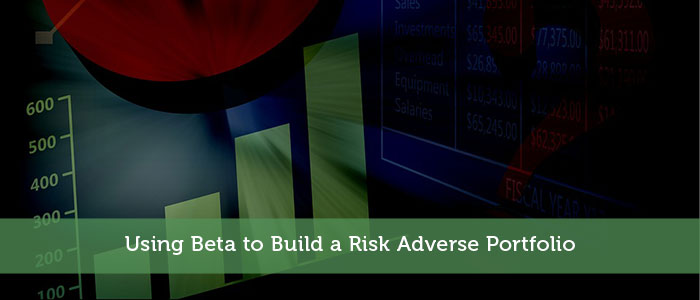If you are a nervous investor, what is your process for building a portfolio? Do you do massive amounts of research before settling on the right investments? Or are you so scared of stocks, you only invest in bonds, or worse yet, not invest in the market at all?
Regardless of what path you choose to build a portfolio, I am here to show you how to start using beta to help you get your asset allocation right and build a solid, diversified portfolio.
Interested in learning more? Let’s get started with using beta to build your portfolio.
What Is Beta
Of course, before we can build a portfolio, we have to make sure you understand what beta is. Beta is the measure of risk of a certain investment. Note that the type of risk I am talking about here is systematic risk.
This is market risk that you cannot diversify away. For example, if you invest in an oil stock, you run the risk of political risk. If the government of an oil producing country falls, there will most likely be an impact to the oil stock you own.
You can limit this risk by diversifying your money into other non-oil stocks. By doing this, you limit your risk.
But systematic risk is the risk of investing in the stock market. So if you are invested, you face this risk and you cannot limit it by investing in other stocks.
Because beta is a measure of market risk, the market as a whole is assigned a beta of 1. Investments that are riskier have a beta greater than 1. Investments that are less risky, or safer than the market have a beta of less than 1.
For instance, a small cap stock will likely have a beta greater than 1. A bond will typically have a beta of less than 1.
Now that we know this, we can start building our portfolio based on beta.
Recommended Stock Investing Posts:
How To Use Beta To Build A Portfolio
To start building your portfolio using beta, you have to understand what your risk tolerance is. Are you comfortable with the risk of the market as a whole? Are you open to more risk? Less risk?
To help you determine your level of risk, you can use a risk tolerance questionnaire to help.
Now that you know your comfort with risk, you can begin to build your portfolio.
If you are looking for less risk than the market as a whole, you should be looking at bonds, utility stocks, defensive stocks, and large company stocks. These all tend to have a beta of 1 or less.
If you are looking for more risk than the market as a whole, you should be looking at small cap stocks and tech stocks. Another idea for winning stocks is Motley Fool recommendations.
Of course, if you are looking for less risk than the market, you could make the majority of your portfolio low beta stocks and sprinkle in a tech or small cap stock for the greater potential growth. Just make sure you don’t overdo it.
Making Certain You Stay Diversified
While using beta is a great option to building a portfolio, you have to make sure you don’t fall into a classic investing trap. This is when you invest too much in one sector.
For example, let’s say you are looking for a less risky portfolio. You find some good utility stocks to invest in and make up your portfolio of 5 utility stocks. While you succeeded in building a portfolio, you failed at building a diversified portfolio.
By putting all of your money into one sector, you run the risk of losing a lot of money should something happen. For example, let’s say interest rates begin to rise. A common result of this is utility stocks decline in value.
Since you are fully invested in this sector, you are going to lose a lot of money. If you instead owned 1 utility stock and 4 stocks in other industries that aren’t impacted by rising interest rates, you would not experience such losses.
The bottom line is to make sure you are investing in various sectors.
Final Thoughts
Using beta to build a portfolio is a smart and easy thing to do. All you have to do is make sure you understand your risk tolerance and not build a portfolio that is overweight in one sector of the stock market.
If you can keep these things in mind, you can use beta to help you to easily build a portfolio.





Don’t you mean rise “averse” (not adverse)?
I meant “risk,” not “rise” (but averse, not adverse…no d).